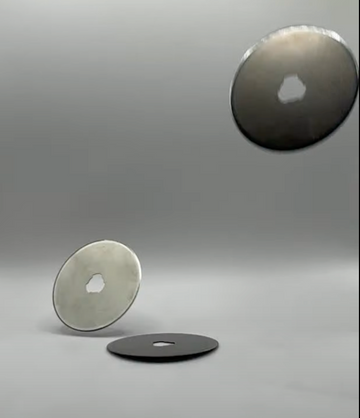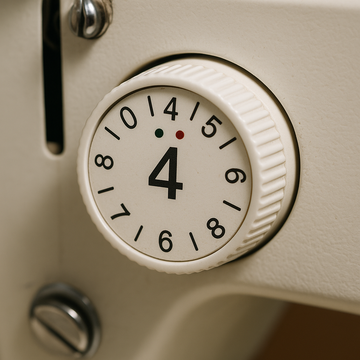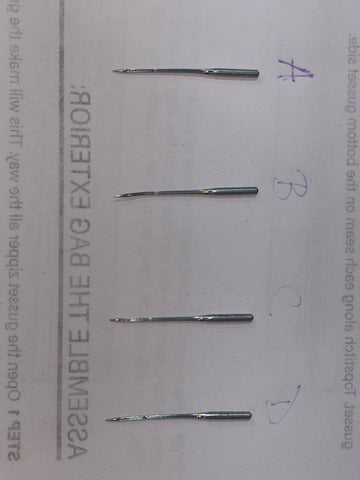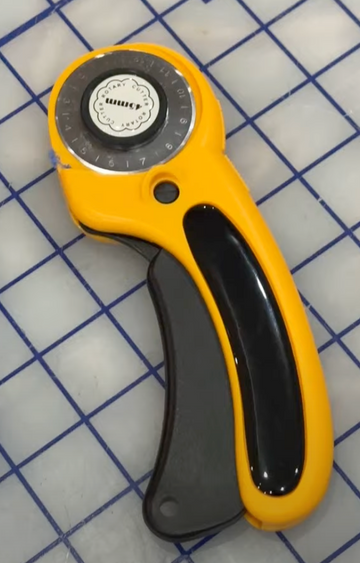If you've been sewing or quilting for any length of time, you probably already know: rotary cutters are magical. They slice through fabric like butter, make precision cuts a breeze, and have revolutionized how we prep projects.
But here’s the thing: they’re basically fabric-loving razor blades on wheels. And like any sharp tool, they need to be handled with care.
Whether you’re a seasoned quilter or just swapped out scissors for a rotary cutter, here’s your go-to guide for staying safe and keeping all your fingers intact.
🧤 1. Always Close the Blade (Yes, Always)
This is the golden rule of rotary cutting. Whenever your cutter is not actively in use, slide the guard closed, even if you're just adjusting fabric for a second. I myself am very guilty of this!
Why?
Because many rotary cutter injuries happen not while cutting, but while reaching for or moving the cutter with the blade exposed. Yikes.
📐 2. Use a Ruler with a Safety Lip
A non-slip quilting ruler with a safety lip (like a ruler grip or a built-in finger guard) is a must. It gives your fingers extra protection by creating a barrier between them and the blade.
Pro tip: Hold your ruler with your pinky curled up and off the edge; don’t let it dangle in the danger zone. Ask me how I know...
🧵 3. Keep Your Blade Sharp
We know it seems counterintuitive, but dull blades are actually more dangerous than sharp ones. A dull blade forces you to press harder, which increases your chances of slipping and injuring yourself.
Change your blade every few projects or every 40-50 yards of fabric (more often for thick layers like batting or denim).
🪄 4. Cut on a Mat (Always)
Cutting on a rotary mat isn’t just for the health of your blade, it also helps prevent slippage and accidental cuts to your work surface (or worse, yourself).
Self-healing mats are your best friend; never cut directly on wood, tile, or your kitchen counter in a pinch.
🧷 5. Cut Away from Your Body
Never angle the cutter toward your body or hands.
Always keep the blade moving away from you, keeping your free hand out of the path, no matter how tempting it is to reach across and smooth something mid-cut.
🧽 6. Keep It Clean & Stored Properly
Lint, batting fluff, and fabric fuzz can gunk up the blade area and affect performance.
Wipe your cutter clean with rubbing alcohol every now and then, and store it in a case or drawer with the blade locked to avoid accidental exposure.
🧠 7. Stay Focused
Rotary cutting is not the time to multitask, text, or tune out.
Distractions (including cats on the cutting mat) increase your risk of injury. Take your time and keep your workspace clear.
✨ BONUS TIP: Have a First Aid Kit Handy
We hope you never need it, but every sewing space should have a little first aid station with bandages, antiseptic, and a finger wrap. Just in case.
💡 Safe Cutting is Smart Cutting
Rotary cutters are amazing tools, just treat them with the same respect you’d give a kitchen knife or power tool. Stay sharp (figuratively and literally), and you’ll keep your cuts (and your fingers) clean.
Want to make blade changes and safety even easier?
🛒 Subscribe to Our Rotary Blade Delivery Service
Let your creativity cut loose—but keep safety stitched in.
-E





